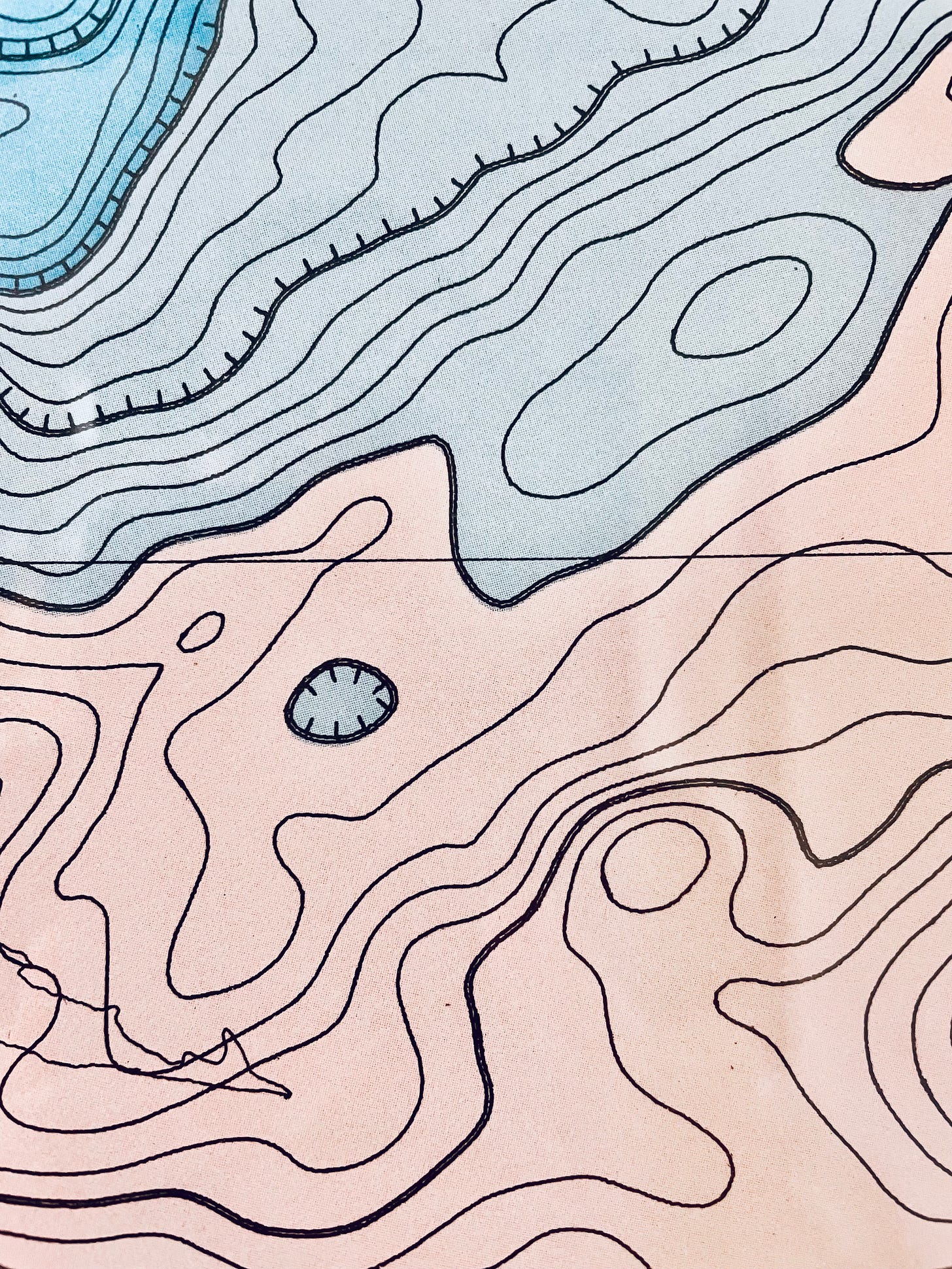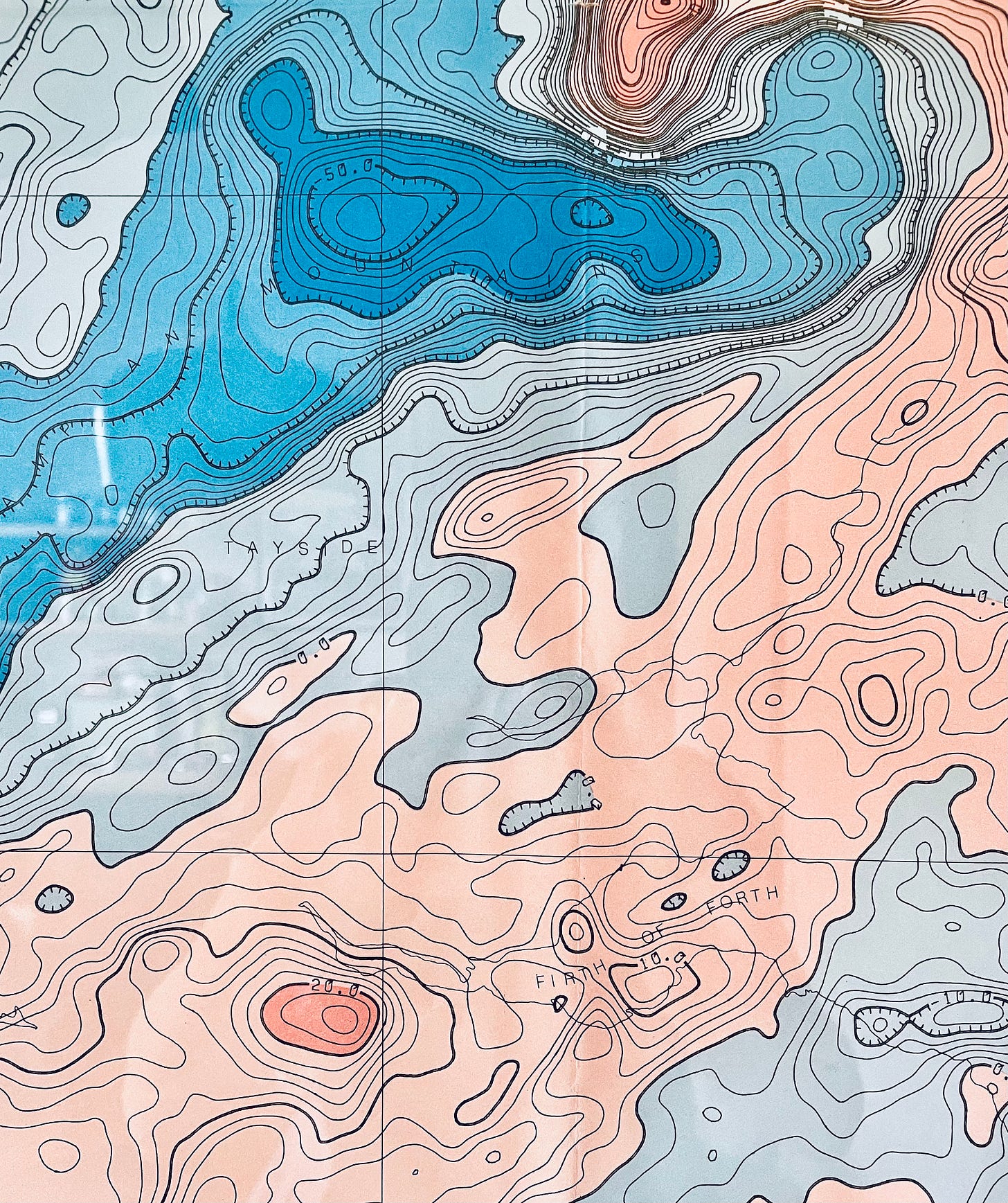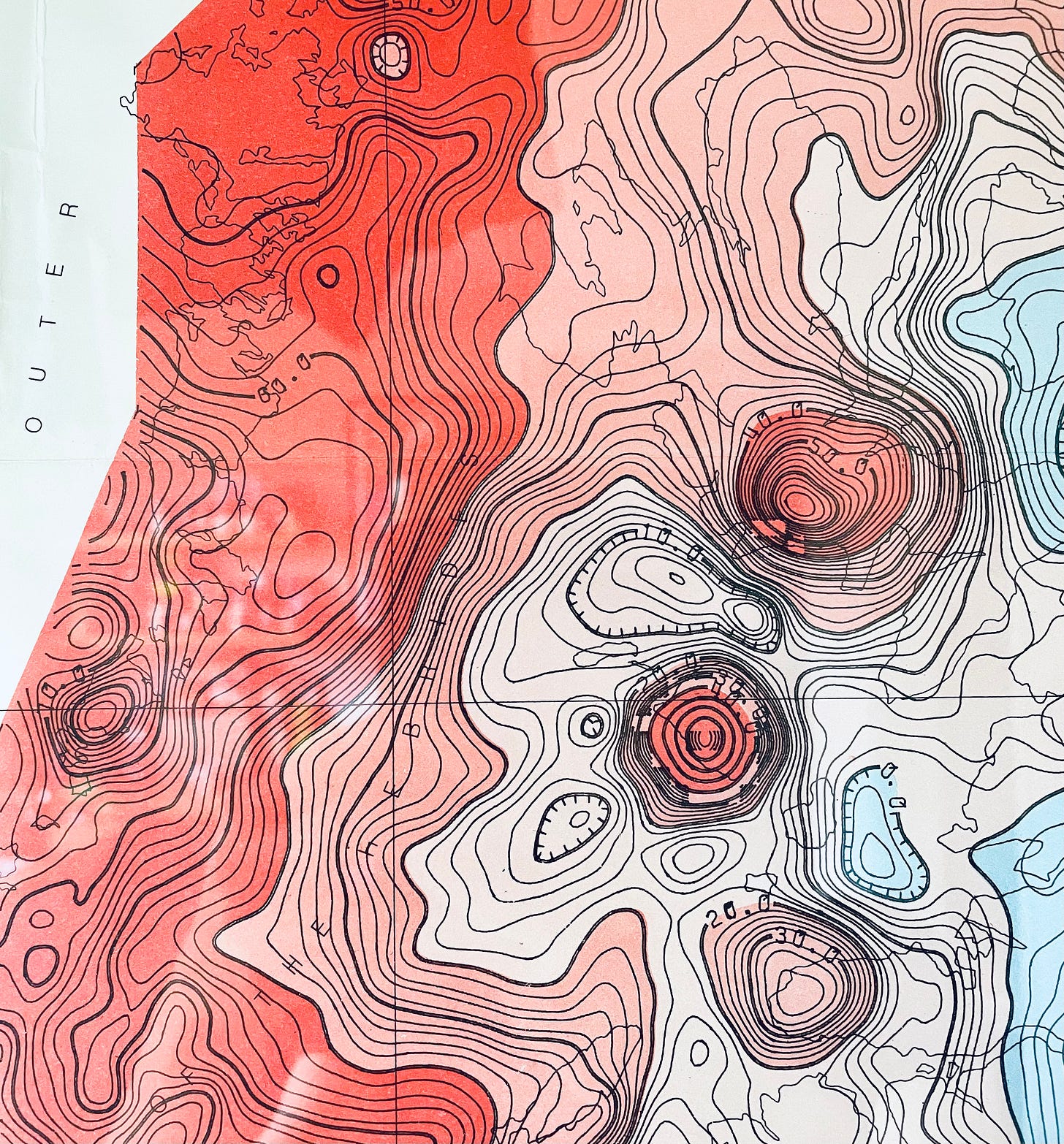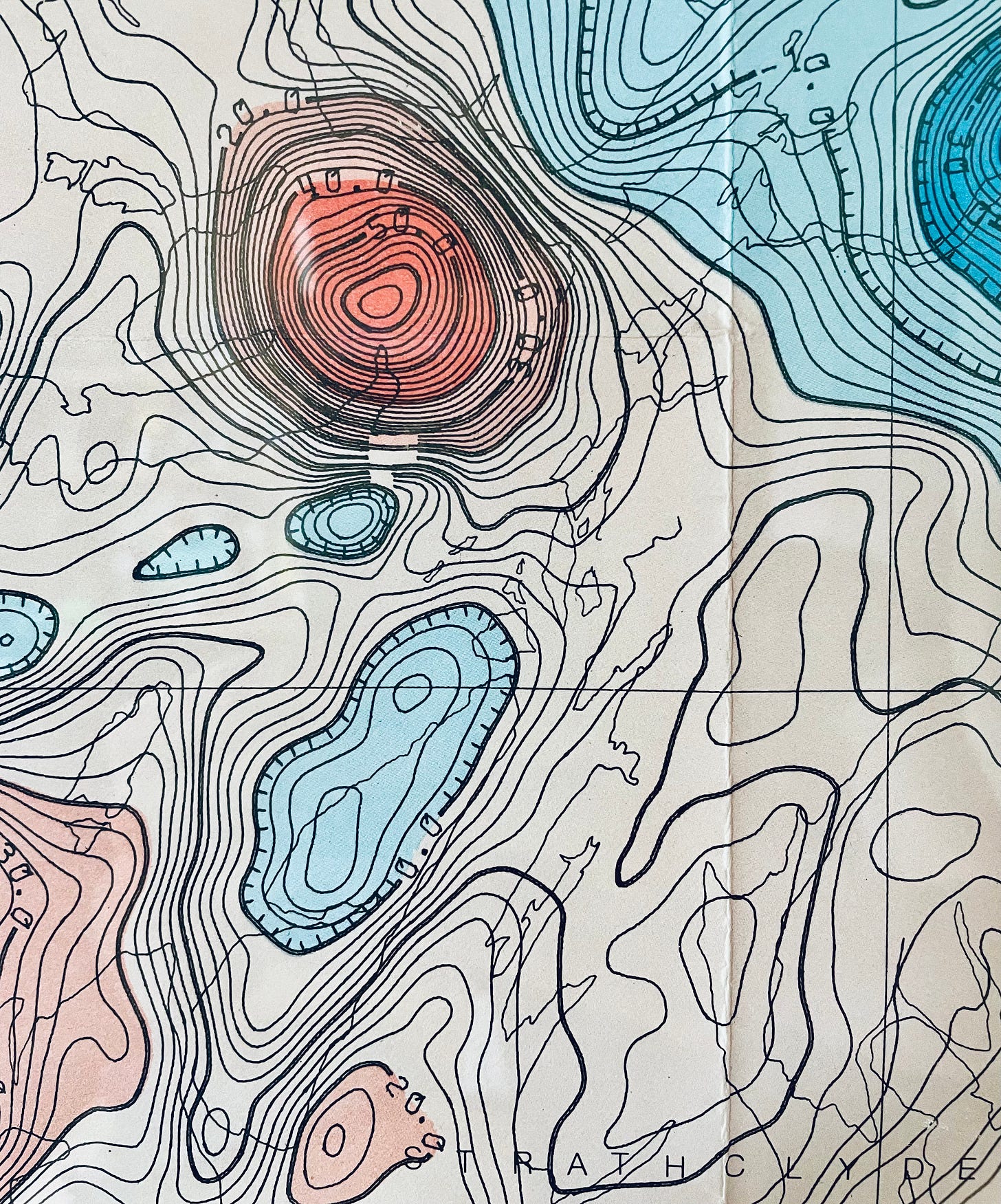Let me talk to you of Mendocino -
South of Eureka,
at the northernmost juncture
of the San Andreas fault,
three plates converge
in a frail tectonic truce.
Concealed by the ocean,
The Gorda Ridge slides
beneath the continental shelf
of the California coast,
restlessly shifting on the molten mantle.
An inch or two each year,
the tiniest of shifts -
the fault line creeps and lifts
‘til it can bear no more.
One slip is all it takes.
The fundament quakes.
The bedrock knows what we forgot.
change is slow -
until it’s not.
My life tilted recently. Suddenly. In the glare of a June afternoon. In my kitchen. And the sharp totality of change has utterly winded me.
On the wall behind my kitchen table is a Regional Gravity Map of the British Isles, which my sister gifted me for my 50th birthday. Through shifting pinks and blues and strange topography is the ghostly outline of Scotland. Peer closely and familiar way markers appear: Firth of Forth and Tayside, the Hebrides and the Grampian Mountains. Keep looking, and the glacial plain of the central belt swims into view in pale pink, just as the Atlantic tends to red, and the Cairngorms to a deepening blue. Sharp coastal edges disappear. Land and sea are not discrete.
Nor are we.
I go most days to the East Lothian coast now, where I rest my body in the holding space between buoyancy and gravity and the tide delivers its daily lesson in flux and obliteration.
The strength of Earth’s gravitational field is measured in milligals (mGal), which is one thousandth of a larger unit called a Gal (after Galileo Galilei). In essence, a milligal measures how quickly an object would accelerate downwards due to gravity acting upon it. Most of my life I’ve thought of gravity as a static, uniform force. But in tiny, significant ways, it isn’t. It’s bumpy - with peaks, troughs and bulges that echo mountains and oceanic trenches, mineral densities and subterranean voids, ice melts and volcanoes.
From a contemporary human standpoint, these fluctuations in Earth’s gravitational field are not economically, socially or politically neutral. They underpin strategies for oil, gas and mineral extraction. They inform predictive vulcanology in places of tectonic instability (like Mendocino, California). And they’re the subject of climate research too. As ice caps melt in one place and water deposits evaporate in another, our gravitational field shudders in ways whose impact isn’t yet clear. But you’d wager none of it was good.
Peaks, troughs, and trenches. Densities and voids. Fissures and eruptions.
There are gravitational forces in our emotional and domestic lives, which shape the worlds beyond and within us. They shift and settle and creak and shove.
One slip is all it takes.
Things accelerate downwards more quickly than we imagine.
I feel those forces more than ever before. In my bones. In my kitchen. On the streets. On my phone. And I’m holding as much compassion as I can muster on a domestic and global scale. But, goodness, I wish we had better maps to understand this gravity, this pressing down, down, down.
Travel safely wherever you are.
PS HUGE thanks to the many of you who’ve offered to make paid subscriptions for my writing on this platform. I appreciate your generosity and support but won’t take up this option at the moment. I don’t quite have the practical structures around me or the daily capacity to meet any demand that might create. For now, I prefer to write and share thoughts as I’m able, and for free. There’s certainly no shortage of shit going down to write about - x








Gorgeous. This bit really hit me. “I wish we had better maps to understand this gravity, this pressing down, down, down. Travel safely wherever you are.”
I just love your writing… and I love this fact: The strength of Earth’s gravitational field is measured in milligals (mGal), which is one thousandth of a larger unit called a Gal (after Galileo Galilei). I’ll stash that one away for later! Haha